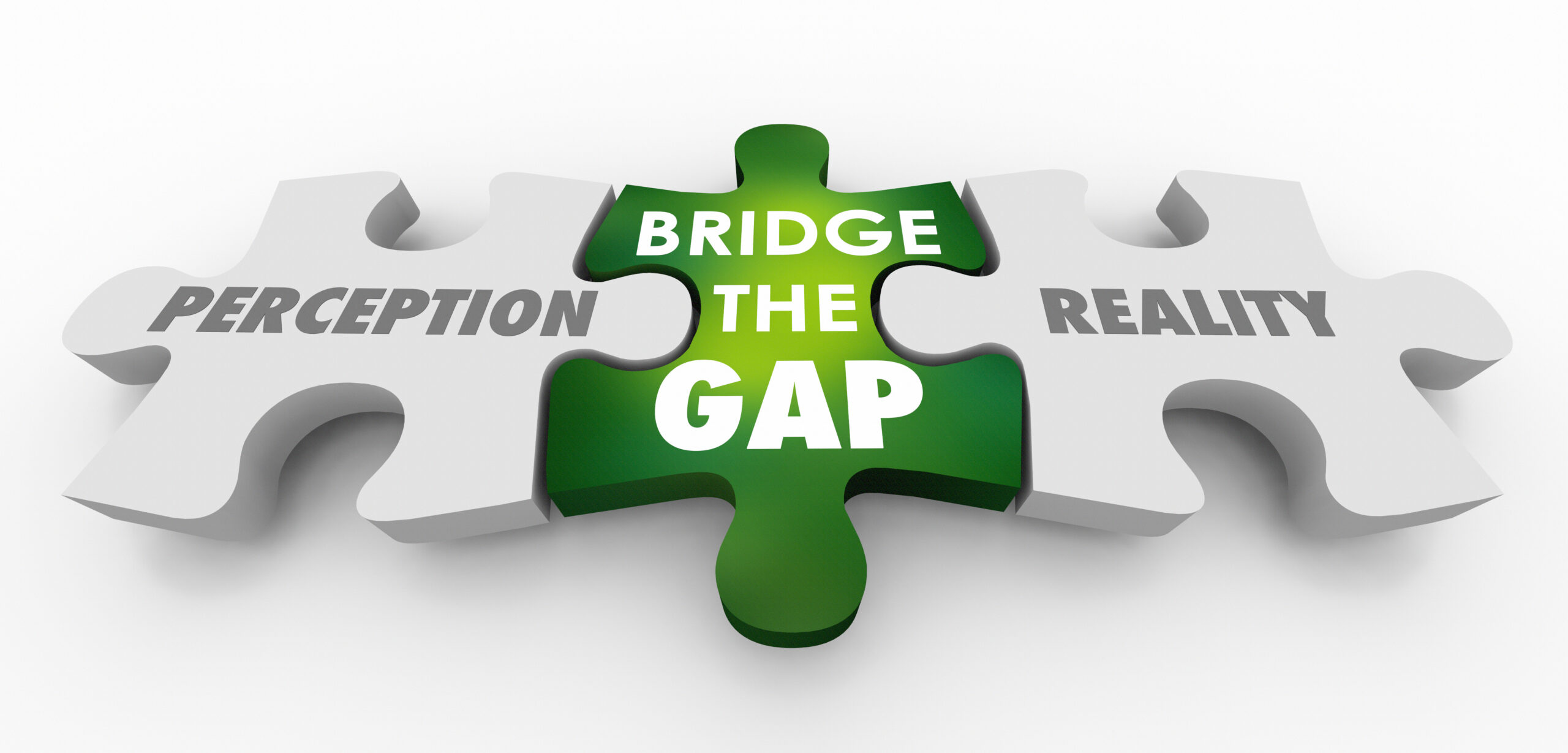This post was written by Dan Cooney, Facilitator and Coach at The Latimer Group.
We all see things differently. Thanks, Captain Obvious! Yes, it’s a truism, but why is this one so important to you as a communicator? You have to understand the perception gap — the difference between what you said and what was heard by your audience. What creates the gap and why is clarity the best antidote to help narrow the gap?
We all listen through the lenses of our own experiences… on the planet earth… as a human being. According to neuroscientist Lynda Shaw, since the time we were in the womb, our brains have been logging a complex database of experiences and reactions to those experiences. If your mom loved apples and your best friend’s mom loved chocolate, each of you will develop preferences about sweet and sour tastes in utero. Then when a salty taste is introduced, your reactions are influenced by the already established preferences to sweet and sour. The number of experiences fed into your database starts to pick up a real head of steam in childhood.
Did you have siblings? Did your parents have a passion for reading or rock climbing? Did you move around or stay put? Were you a math and science kid, or were you more at home on a soccer field? Did the world feel generally safe or threatening? This accumulation of experiences is as unique as our fingerprints and it feeds the perception gap. How so?
In general, people are not listening to you with all of their attention. They are listening to some of what you say but are they are also simultaneously making judgments about what you are saying and predictions about what you are about to say next. The brain evolved this way to conserve energy. We are all evaluating everything we hear and filtering it through our database of experiences that goes back to sweet and sour days in the womb. People “hear” a mash-up of your words and their own thoughts. It’s not surprising then if you and your team listen to the same conference call and “hear” it differently. This insight has profound impacts on your ability to communicate effectively.
Seeing and hearing the same things differently is what makes the world go round. Much of the richness of life comes from the beauty and knowledge that others can gift to us because of their unique life story. As a communicator, however, you want to inoculate your main points with as much clarity as possible. Clarity makes your ideas easier to consume for people who are spending only so much energy listening and helps your audience see things as you intend them to be seen.
Does your team:
– Take too long to make decision?
– Fail to ask for what it wants or needs from you?
– Make things too complicated?
– Deliver unconvincing or disorganized presentations?
– Have new hires who are unprepared to communicate in the workplace?
We transform teams and individuals with repeatable toolsets for persuasive communication.
Explore training, coaching, and consulting services from The Latimer Group.
Looking for more from The Latimer Group?







Comments